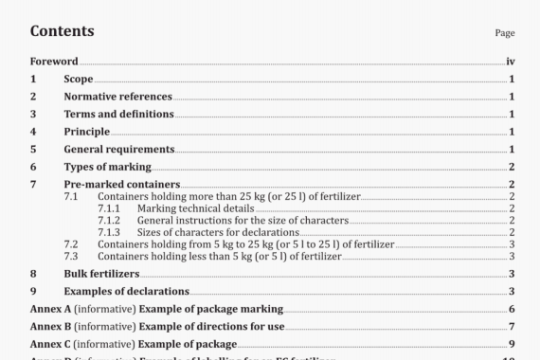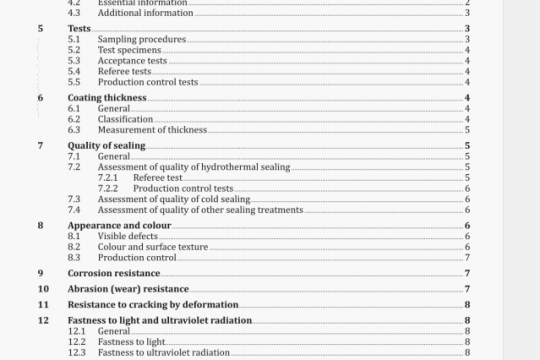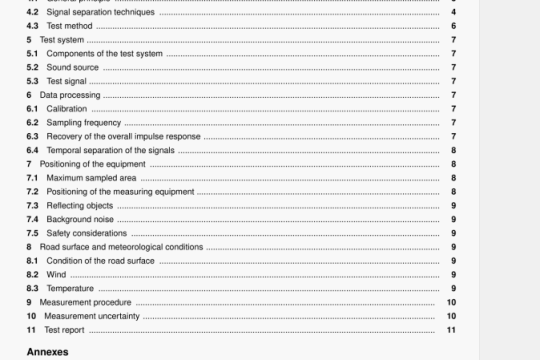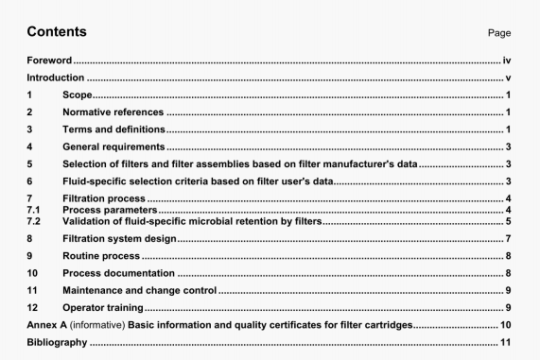ISO 1132-2:2001 pdf download
ISO 1132-2:2001 pdf download.Rolling bearings —Tolerances—Part 2:
Measuring and gauging principles and methods.
5.1 Measuring equipment
Measurements of the various dimensions, runouts and clearances can be performed on different types of measuring equipment and with differing degrees of accuracy. The principles described are commonly used by bearing manufacturers and users and generally they provide an accuracy sufficient for practical purposes. It is recommended that the total measuring inaccuracy should not exceed 10 % of the actual tolerance zone. However, the measuring and gauging methods may not always fully check the indicated requirements. Whether or not such methods are sufficient and acceptable depends on the magnitude of the actual deviations from the ideal dimension or form and the inspection circumstances.
Bearing manufacturers frequently use specially designed measuring equipment for individual components, as well as for assemblies, to increase speed and accuracy of measurement. Should the dimensional or geometrical errors appear to exceed those in the relevant specifications, when using equipment as indicated in any of the methods in this part of ISO 1132, the matter should be referred to the bearing manufacturer.
5.2 Masters and indicators
Dimensions are determined by comparing the actual component with appropriate gauge blocks or masters whose calibration is traceable through national standards organizations to the length of the international prototype as defined in ISO 1. For such comparison, a calibrated indicator of appropriate sensitivity is used.
5.3 Arbors
In all cases when the arbor method of measuring runout is used, the rotational accuracy of the arbor shall be determined so that subsequent bearing measurements may be suitably corrected for any appreciable arbor inaccuracy. A precision arbor having a taper of approximately 0,000 2:1 on diameter shall be used.
In cases when an arbor is used to measure the bore diameter of a roller complement, a precision arbor having a taper of approximately 0,000 5:1 on diameter shall be used.
5.4 Temperature
Before any measurements are made, the part to be measured, the measuring equipment and master shall be brought to the temperature of the room in which the measurements are to be made. The recommended room temperature is 20 °C, see ISO 1. Care shall be taken to avoid heat transfer to the component or assembled bearing during measurement.
In the case of single-row angular contact ball bearing rings and tapered roller bearing rings, the reference face is the “back face” which is intended to support axial load.
For bearings with flanged outer rings, the reference face is the flange face intended to support axial load.
6 Measuring and gauging principles and methods
6.1 General
Principles for measuring and gauging are shown for the applicable definitions in ISO 1132-1. Methods are described as they apply to various bearing types in clauses 7 to 16 of this part of ISO 1132. Where more than one method is shown, a primary method is identified. Many terms in ISO 1132-1 are derivatives of measured features and they are so identified in the comments.
Measurements of geometrical accuracy (e.g. deviation from circular, cylindrical and spherical form) are as specified in ISO 4291.
6.2 Format of clauses
The format of clauses 7 to 16 is arranged in three parts.
a) The title identifying the principle and method including the clause numbering.
b) The left hand column entitled “Method” shows:
a figure illustrating the method;
essential characteristics of the method;
— the readings to be taken;
required repetitions.
c) The right hand column entitled “Comments” is used for supplementary information, e.g.:
a particular application;
— any restrictions in application;
— any particular sources of error;
— any particular requirements as to equipment;
— examples of equipment;
— treatment of readings obtained.
6.3 Caution
Consideration has not been given to the influence of the accuracy and design of the measuring equipment or to the skill of the operator. These factors sometimes have a significant influence on the resulting measurement or gauged assessment.
The measuring and gauging principles and methods are not illustrated in detail and are not intended for application on end-product drawings.




